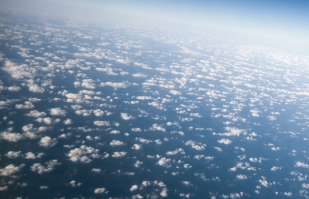Global efforts to protect ozone layer pays off
International efforts to protect the ozone layer, the shield that protects life on Earth from harmful levels of ultraviolet rays, are a success and have stopped additional ozone losses and contributed to mitigating the greenhouse effect, according to a new report published on Thursday.
 |
|
The Ozone Layer [File photo] |
The report, "Scientific Assessment of Ozone Depletion 2010," provides new information about the effects of climate change on the ozone layer, as well as the impact of ozone changes on the Earth's climate.
The report published by the World Meteorological Organization (WMO) and UNEP says that an important remaining scientific challenge is to project future ozone abundance based on an understanding of the complex linkages between ozone and climate change.
Changes in climate are expected to have an increasing influence on stratospheric ozone in the coming decades, it says.
These changes, the report says, derive principally from the emissions of long-lived greenhouse gases, mainly carbon dioxide, associated with human activities.
The report was written and reviewed by some 300 scientists and launched on the UN International Day for the Preservation of the Ozone Layer. It is the first comprehensive update in four years.
The report reaffirms that the Montreal Protocol is working. "It has protected the stratospheric ozone layer from much higher levels of depletion by phasing out production and consumption of ozone depleting substances."
Given that many substances that deplete the ozone layer are also potent greenhouse gases, the report says that the Montreal Protocol has "provided substantial co-benefits by reducing climate change."
In 2010, the reduction of ozone depleting substances as a result of the Montreal Protocol, expressed in CO2-equivalent emissions (about 10 Gigatonnes per year), were five times larger than those targeted by the first commitment period (2008-2012) of the Kyoto Protocol, the greenhouse emissions reduction treaty.
Over the past decade, global ozone and ozone in the Arctic and Antarctic regions is no longer decreasing but is not yet increasing.
As a result of the phase-out of ozone depleting substances under the Montreal Protocol, the ozone layer outside the Polar regions is projected to recover to its pre-1980 levels some time before the middle of this century.
The recovery might be speeded up by greenhouse gas-induced cooling of the upper stratosphere. In contrast, the springtime ozone hole over the Antarctic is expected to recover much later.
The impact of the Antarctic ozone hole on surface climate is becoming evident, leading to important changes in surface temperature and wind patterns.
It is reaffirmed that at mid-latitudes, surface UV radiation has been about constant over the last decade. In Antarctica large UV levels continue to be seen when the springtime ozone hole is large.
The report finds that many ozone depleting chemicals, such as CFCs (chlorofluorocarbons), once present in products such as refrigerators and spray cans, have been phased out. Demand for replacement substances called HCFCs (hydrochlorofluorocarbons) and HFCs (hydrofluorocarbons) has increased.
Many of these are powerful greenhouse gases. Total emissions of HCFCs are projected to begin to decline in the coming decade due to measures agreed under the Montreal Protocol in 2007. But they are currently increasing faster than four years ago.
The most abundant one, HCFC-22, increased more than 50 percent faster in 2007-2008 than in 2003-2004, the report says.
Abundances and emissions of HFCs are increasing at about 8 percent per year. HFC-23 is a byproduct of HCFC-22 production. Although it has no impact on the ozone layer it is more than 14, 000 times more powerful as a greenhouse gas than CO2.
"Today's report underlines that action to protect the ozone layer has not only been a success, but continues to deliver multiple benefits to economies including on efforts to meet the Millennium Development Goals," said UNEP Executive Director Achim Steiner said.
He said the contribution to combating climate change is one but so are the direct benefits to public health. "The ozone-hole issue demonstrates the importance of long-term atmospheric monitoring and research, without which ozone destruction would have continued unabated and might not have been detected until more serious damage was evident," said WMO Secretary-General Michel Jarraud. "The Montreal Protocol is an outstanding example of collaboration among scientists and decision-makers that has resulted in the successful mitigation of a serious environmental and societal threat,'' Jarraud said.
Jarraud said human activities will continue to change the composition of the atmosphere. "WMO's Global Atmosphere Watch program will therefore continue its crucial monitoring, research and assessment activities to provide scientific data needed to understand and ultimately predict environmental changes on both regional and global scales."
 0
0 






